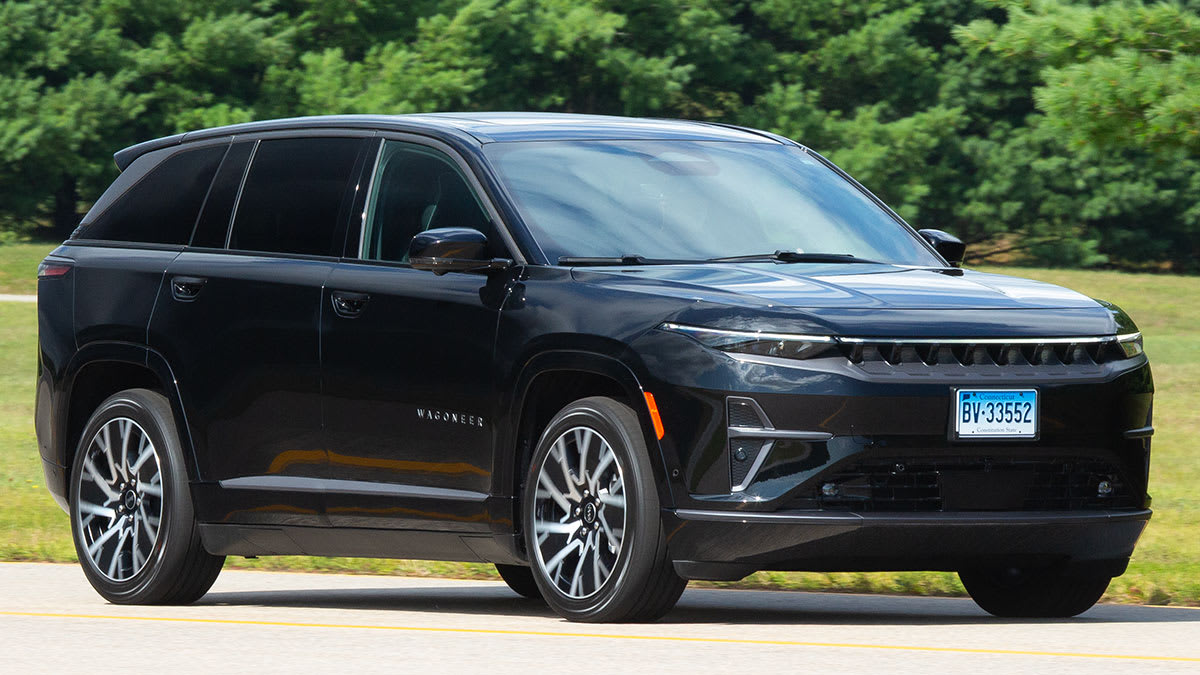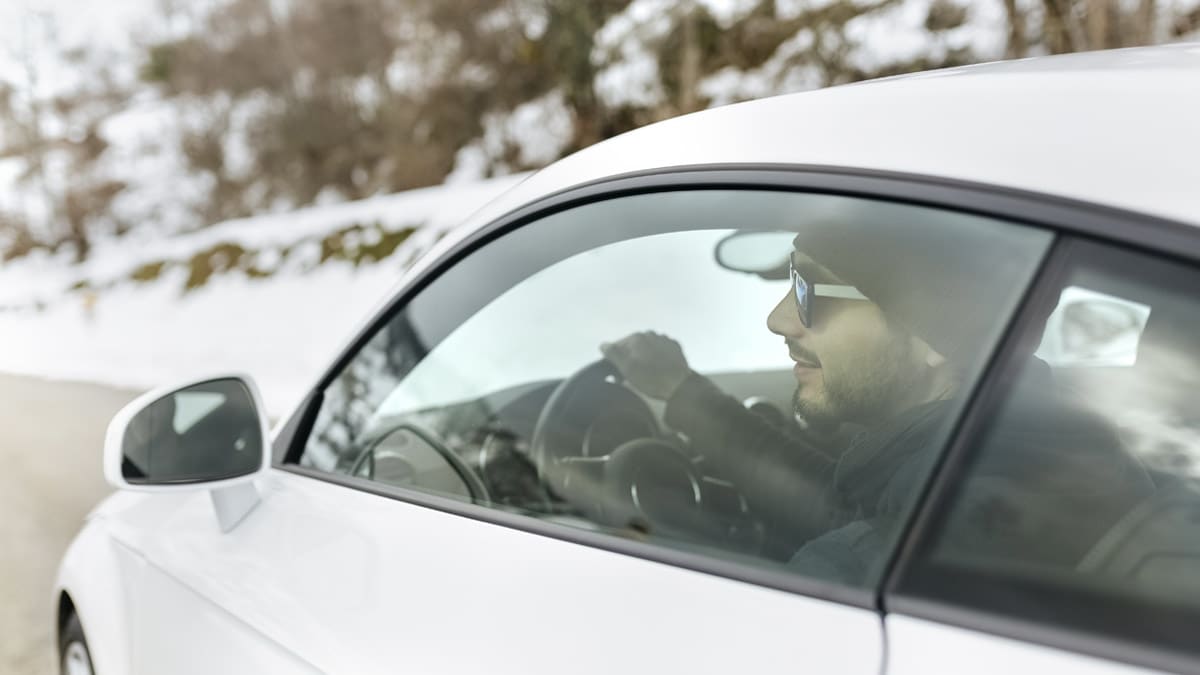
Crude powertrain: The Wagoneer S’s 500 hp is of little use if it can’t be efficiently (or even adequately) employed to move the SUV down the road—and that’s a problem for this SUV. As one tester put it, “Unfortunately, the electric powertrain is one of its worst qualities. It is unrefined in a number of ways. For something that is inherently smooth (as electric power), it’s messed up.” Here’s what we’ve experienced so far:
• Uneven power delivery: When accelerating from a stop, there’s an initial power lag, which the driver generally reacts to by pressing down more on the throttle. At this point, the SUV launches ahead with enough abrupt, brute force that the driver has to lift off the throttle or risk losing control.
• Excessive wheelspin: That lag followed by the brutal power delivery often results in the SUV spinning its inside front tire (the left tire when making a left turn, for example) when pulling out into traffic. The only easy way to avoid this is to switch the vehicle into its “Eco” mode, which disengages the front motor—no power, no wheelspin—but also no AWD.
• Torque steer: This is when a vehicle’s acceleration is powerful enough to disrupt its ability to go in a straight line. One tester summed this up best: “There’s quite a bit of torque steer, to the point that if you floor the accelerator, you better be gripping the wheel tight, because it’s tugging back and forth in your hands.”
• Vibrations: Some drivers said that there is a fair amount of vibration that comes through the floor and steering wheel at anything more than 50 percent throttle application. This vibration is also noticeable any time the driver lifts off the accelerator pedal.
Brakes: Every tester found the brakes to be a problem in the Wagoneer S. While the pedal ultimately feels firm, the initial travel is very soft, which isn’t reassuring. It’s as if the regenerative braking system and the friction brakes don’t work in harmony. It’s nearly impossible to smoothly stop the SUV at low speeds because the brakes aggressively grab, no matter how much pressure is put on the pedal. A number of testers said they would “underbrake” when coming to a stop: They’d press down an appropriate amount on the pedal, based on muscle memory, but then they would have to quickly add more pressure because the Wagoneer S wasn’t stopping quickly enough. The result is that drivers lack confidence in the brakes.
Handling: The SUV’s steering is also nonlinear and rubbery. It’s quick off-center, but lacks sufficient damping as the driver straightens the wheel. All of this means that moves like quick lane changes feel a bit disconcerting.
Too many other noises: While on-road noises are kept to a minimum, the driver and passengers are still subjected to a cacophony of other sounds. The HVAC system is very loud, particularly the compressor when it’s pressurizing, along with a number of accessory sounds.
As with some other EVs and hybrids, the Jeep’s pedestrian warning sound is intrusive and obnoxiously loud. It’s particularly annoying when driving around the city or town centers because the sound constantly comes on and off as speeds change. Nearly every tester commented on this, and one tester said it’s so loud it seems as if the sound plays through the internal speakers as well as an external one.
Some testers also commented on odd vibrations and noises from the powertrain, as well as a whistling sound from the rear of the SUV when driving at highway speeds.
EV information and settings: There’s barely any charging information shared with the driver when the Wagoneer S is plugged in. One tester said that when they were DC fast charging and sitting inside with the climate and audio system on, there was “almost no information available to view regarding what is happening. A green plug icon in the instrument panel is really the only indication the SUV is charging.” The driver can watch the range and state of charge (SOC) go up, but the Jeep doesn’t share any information on charging speed or estimated time to completion.
There’s a bit more information when the SUV is off, but it only shows an estimate of the time to fully charge at 240V or 120V, which is irrelevant for DC fast charging. Another tester noted that the Wagoneer S will eventually shut off by default when it’s plugged into a charger. Given that many people will sit inside the SUV while it’s fast charging—and will want to listen to the audio and use the climate system—the lack of data and automatic shutoff aren’t just odd, they’re confounding.
It appears that the only way to adjust the regenerative braking performance is to go into the center screen and toggle between the two available modes. There’s no way to do it using controls on the steering wheel or on the center console, as many other EVs offer. Even worse, the mode always reverts to the “mild” setting when restarting the Wagoneer S.









